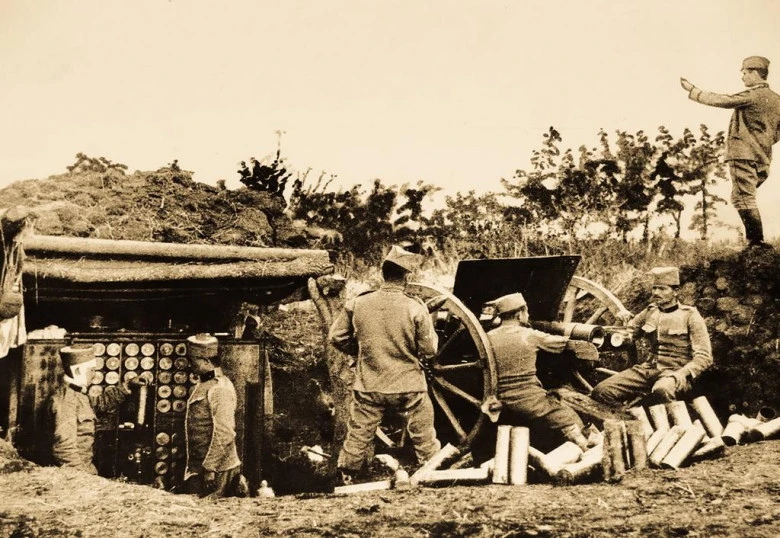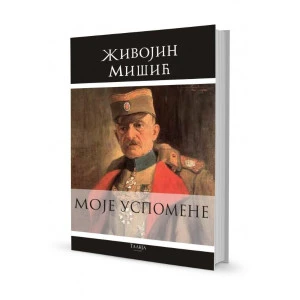THE BATTLE OF KOLUBARA - HOW THE WORLD FAMOUS STRATEGY OF SERBIAN WAR WAS BORN

The Battle of Kolubara entered the history of warfare as the only example that the army, which was predicted to collapse completely, was reorganized in a short time, went on the counter-offensive and inflicted significant losses on the enemy.
The Battle of Kolubara, which took place on November 16, 1914, is the day when important pages of Serbian history were written. That is the day when the Serbian army, led by the staunch General Zivojin Misic, launched a counter-offensive against the second Austro-Hungarian military campaign in the First World War.
The Battle of Kolubara lasted for about a month and ended in mid-December with the victory of the Serbian army over the Austro-Hungarian troops with the exceptional merits of General Zivojin Misic.
The Battle of Kolubara, as well as the entire First World War, and what came later, showed that the Serbian people, their culture and religion were not easy to erase from the map of the world.
Basic facts about the Battle of Kolubara
The Battle of Kolubara, fought from November 16, when the first attack on the Serbian army took place, until December 15, 1914, took place around the river Kolubara and on the slopes of the mountains Suvobor and Maljen, on a front of about one hundred and fifty kilometers.
This battle is of special importance because the enemy army numbered about 400,000 soldiers and 400 cannons, while the Serbian army consisted of about 27,000 soldiers and 426 cannons.
The situation in the army before the battle and the first attacks of the enemy
The then General Oskar Pocorek launched an offensive, hoping for success and counting on the exhaustion of the Serbian army after the Battle of Cer. All this was especially true of the First Army, which suffered the greatest losses and strains during the past battles.
The situation in the Serbian army was not commendable. Artillery ammunition and all other combat means were missing. The only relief in the Battle of Kolubara was the unfavorable weather conditions and the poor configuration of the terrain from which the enemy attacked.
Although it gained time in time, the army had to seriously prepare for the attack.
A strategic decision worth winning
In the whole very ungrateful situation, Petar Bojovic was wounded and because of that wound he could not walk anymore. This situation required the Supreme Command to make a change in the command post.
With the ultimate goal of stopping the penetration of Austro-Hungarian forces, the Serbian army retreated to the right bank of Kolubara and Ljig, according to the orders of the Supreme Command, so at the time of the Serbian army's withdrawal, General Zivojin Misic was appointed commander of the First Army.
Vojvoda Mišić, as a well-known military strategist, managed to rebuild strong combat units capable of the greatest feats from the demoralized military mass. It was under his leadership that the most important battle of the First World War took place for the Serbian people - the Battle of Kolubara.
The Serbian army successfully fought the first attacks of the enemy and despite the very bad situation, until November 26, realizing that it would not be able to resist strong enemy pressure, Zivojin Misic withdrew his army to positions in the region on the night between November 21 and 22. Suvoborske grede, from where, according to the directive of the Supreme Command, he was supposed to carry out a counterattack.
Then Mišić decided on a riskier move. With the approval of the Supreme Command, he withdrew the army to positions in front of Gornji Milanovac, with the aim of regrouping the army, at the same time "reducing the front" so that it could act with greater force on smaller territory, and above all he wanted to strengthen. feed.
That is how the withdrawal followed on November 26.
With this decision, General Živojim Mišić turned the course of the Battle of Kolubara in favor of the Serbian army.
The Supreme Command strengthened the First Army with the Drina Division of the First Call from the Third Army. However, after the Austro-Hungarian vigorous attack on November 24, the Serbian Supreme Command gave up the planned attack.
Withdrawal of the army and its recovery
Mišić's decision to withdraw the First Army enabled the desired conditions for a counter-offensive to be met. The filling was done with the arrival of 1300 students - corporals from the Skopje Student Battalion, who filled the command posts in the basic platoons. In the meantime, help in the form of artillery ammunition arrived, so it was no longer necessary to save ammunition.
Rest and respite, strengthening the army, helping with weapons, developing Mišić's strategic plan, and what it meant to the Serbian army. Their morale was raised again and strengthened, and they were ready and determined to attack the enemy.
After the end of all preparations, Mišić informed the Supreme Command that the First Army would attack at 3 am on December 3.
The final outcome of the Battle of Kolubara
The fighting was fierce, and the soldiers of the First Army achieved success day by day.
Already on the third day of the offensive, six officers and almost two thousand soldiers were captured. At that time, large quantities of weapons, ammunition and food were seized. In the meantime, the enemy forces fled in front of the centers of the First Army, which indicated the disorder and possible failure of the Austro-Hungarian army.
It was reported that the enemies withdrew from Valjevo, and soon after that, the forces of the First Army managed to destroy the last enemy resistance and influence their complete withdrawal, on the night between December 14 and 15.
With the outbreak of the First Army and the Užice Army on the banks of the Drina and Sava and the liberation of Belgrade, after fierce battles on Suvobor, Ovčar and Kablar, Rudnik and Kosmaj, the Battle of Kolubara ended victoriously. The Supreme Command could state that there are no more enemy soldiers on the territory of the Kingdom of Serbia, except prisoners of war.
Historical significance of the Battle of Kolubara
The greatest significance of the Battle of Kolubara is that Austria-Hungary did not succeed in destroying the Kingdom of Serbia with its forces, which is why the Central Powers were forced to fight on three fronts in 1915 as well.
Germany was forced to send human aid to the Balkan front, which weakened its forces on the remaining two fronts.
The Battle of Kolubara is also significant in that both armies did not have strategic reserves in operations, which could strengthen their lines where necessary, but achieved this by transferring forces from one part of the front to another.
The battle was also important on the world stage. The violent Serbian victory postponed the entry into the war of Bulgaria, which was preparing to enter the war on the side of the Central Powers, counting that Serbia was defeated and that it would reach the territory of the Kingdom of Serbia without a fight.
The struggle from which the whole world is a complete failure of the Serbian army and the capitulation of the Kingdom of Serbia in the history of war has become a great example that the end results of the struggle are always unpredictable.
Interesting facts: Due to the failure in the offensive against Serbia and the heavy defeat on Kolubara, Poćorek was ashamed and retired, and Živojin Mišić was introduced into the ranks of Serbian dukes.
Related products
Read also
Who was Saint Sava and what was his contribution?
"Saint Sava: A Beloved Serbian Saint with a Rich Legacy and Cultural Significance"
…Serbian New Year: Tradition, Customs and How to Celebrate it
The Serbian New Year, also known as the Orthodox New Year, is celebrated on…
Gifts Inspired by Serbian Culture: Authentic Ideas for the Holidays
The holidays are a time of giving, and finding the perfect gift is often a challenge.…
Traditional Serbian Christmas Customs: How to Cultivate Them in Modern Times?
Christmas is the most joyous holiday in Orthodox Christianity, a time when families…
How to Bring the Spirit of Orthodox Tradition into Your Home This Winter?
Winter is the perfect time to bring warmth, togetherness and the spirit of Orthodox…
Serbian Souvenirs: Perfect New Year's Gifts for All Tastes
New Year is the time of giving, and what is more beautiful than a gift that…
How to stay productive and not waste an entire day on Black Friday shopping
Black Friday is a day full of amazing discounts, but it can easily become exhausting…
Folk Beliefs and Customs for Saint Aranđel - Assembly of Holy Angels
Saint Michael the Archangel, who is celebrated…
Folk Beliefs and Customs for Đurđić - Glory of St. George
Đurđić, the feast of St. George, celebrated on November 16, is one of the most…
Smart shopper's guide: How to make the most of Black Friday
Black Friday is the most famous shopping event of the year that offers huge…
The history of Black Friday: How it all began and why it continues
Black Friday, known as the biggest discount day of the year, today attracts…
Gifts for Children in the Diaspora: How to Nurture the Connection with the Language, Culture and Tradition of Serbia
Children who grow up in the diaspora face specific challenges - they lose contact…

Apply for newsletter
Sign up for the Serbianshop newsletter and get a 10% discount.















